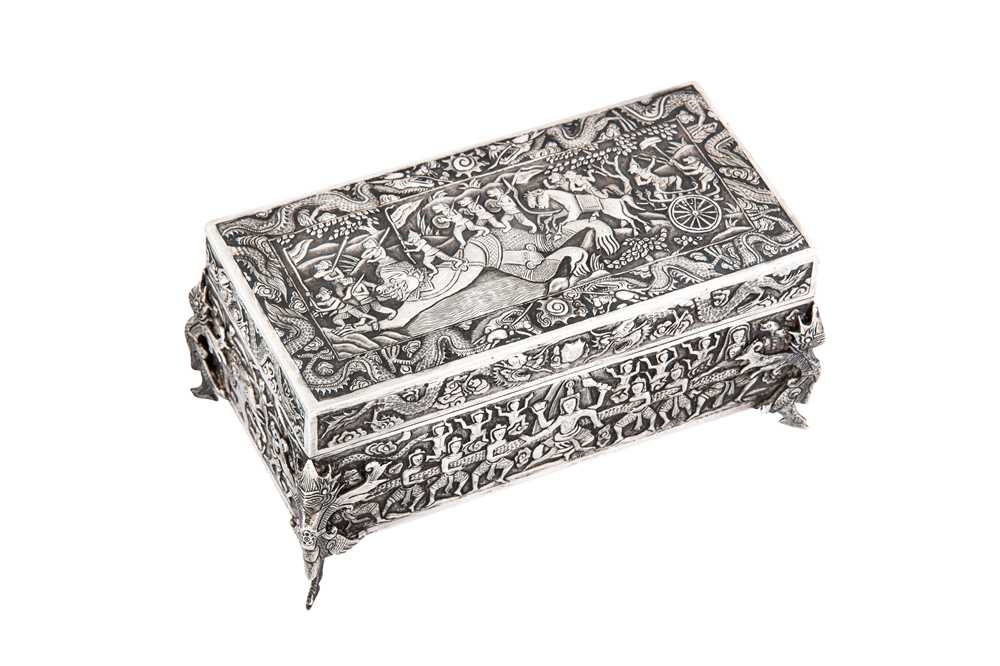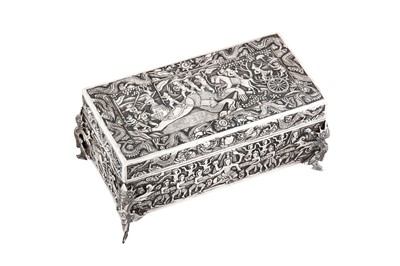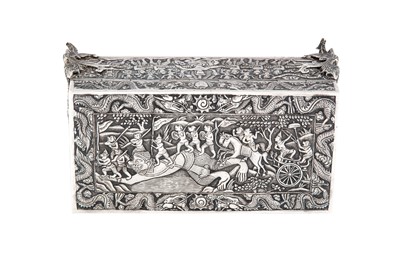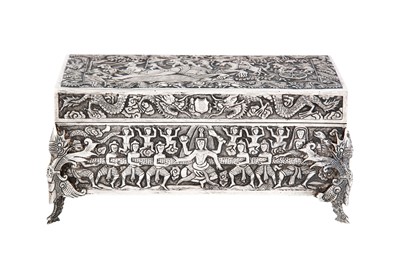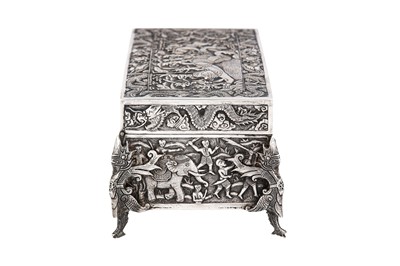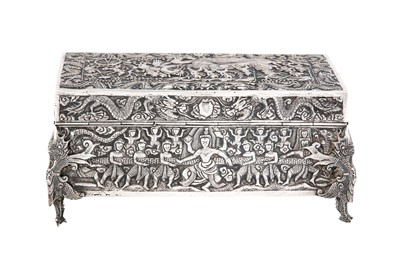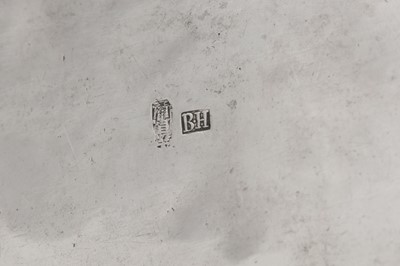19th Oct, 2022 13:00
Silver & Objects of Vertu
A late 19th / early 20th century Chinese Export (Thai or Cambodian) silver casket, circa 1900 by Bao Xing
A late 19th / early 20th century Chinese Export (Thai or Cambodian) silver casket, circa 1900 by Bao Xing
Qing dynasty. Of rectangular form with a hinged lid raised upon four feet formed as demons (yak). The lid embossed with a scene from the Ramakien where Hanuman magically enlarges himself allowing Rama’s army to use his body as bridge to cross a raging river on the way to Lanka to rescue Sita, with Rama in a horse drawn chariot. The scene all edged with trailing Chinese dragons chasing the mystic pearl. The front and back with the Samudra Manthana episode in the Hindu Puranas, “The Churning of The Ocean of Milk”, drawn from the 12th century Khmer rock carving at Angkor Wat, Siem Reap, Cambodia. Depicting the serpent king Vasuki acting as the rope that was attached to Mandar Mountain during the stirring of the sea of milk, one side by a team of asuras, and on the other, by a team of devas, Lord Shiva in front with four arms holding two objects. The sides with scenes from the Battle of Lanka, between Rama and Ravana, King of the Rakshasas. The sides of the lid with trailing Chinese dragons chasing the mystic pearl. Marked underneath with寶興 (BAO XING), also stamped B.H for Bo Hing (alternative of Bao Xing). The bezel of base marked with French swan guarantee mark (used 1893-1970).
Length – 16.2 cm / 6.4 inches
Weight – 550 grams / 17.68 ozt
The mark for Bao Xing is illustrated in Bromberg, P., (2019), Thai SIlver and Nielloware, Bangkok: River Books, p. 192 fig. 7.04. where it is written “It is claimed that this silversmith operated in Canton from 1860-1910, but unfortunately, to date, no supporting evidence has come to light. The Bao Xing atelier appears to have specialised in high-relief repousse work.”
The presence of the French import mark and the imagery drawn partly from Angkor Wat implies this box was intended for Cambodia. Many ethnic Chinese silversmiths worked throughout Thailand in the 19th century and 20th century, previously a vassal state of China until 1853, many of them stamped their work with their names, but their biographical details are largely lost. The Thai-Chinese nobility and merchant class mainly hailed from Canton (Guangdong) and Fujian.
Do you have an item similar to the item above? If so please click the link below to request a free online valuation through our website.
